
In January, Pearl's Project Based Learning Group is taking on a unit called Literature to Games.
Feel free to join in the fun!
See our Project Idea book for this unit here or link to it in Book Creator HERE.








Project Based Learning; Champions of Change
Families in Pearl's Project Based Learning Class are spending December and the first part of January to complete projects based around the theme: Champions of Change.
Check out the Idea Book here and consider doing your own PBL project this month around this theme. Contact Abby Jorgensen with questions, ideas, or to join the class in January. ajorgensen@qsd48.org
Champions of Change Idea Book, Book Creator Version



Did you notice Google’s Doodle on November 1st? This image was created by Indigenous artist Marlena Myles, a member of the Spirit Lake Dakota/Mohegan/Muscogee tribe. She illustrated the North American Indigenouse game of stickball. She described the G as an elder performing the smudging ceremony, which was done before games. She said the O is a medicine wheel, which is a symbol used by many North American Tribes. This symbol reminds people that we are part of a ‘never ending, sacred hoop.’
To learn more about this image, read this article.
In honor of Native American Heritage Month with your family, here is a resource that has a list of 10 great books you may be able to find at your local library. It will also give you some great ideas of what you can do as a family, including discussing this time of year from the perspective of Indigenous people. The Smithsonian also has many videos of performances featuring traditional music and dancing while others feature contemporary music by Native American artists here: Smithsonian Performances

In October Pearl's Project Based Learning Group worked through a 2nd project around the theme of Habitats.
Read the Idea Book Here and create a Habitats Project of your own at home.

Awesome projects completed by our PBL group included the following:
Book Creator books with the following titles:
Bats
Habitats of the Native People of the Amazon Rainforest
Leopards
Refugees
Happy Willow Trees
Breakfast Foods - A Cookbook
Festus The Leopard Gecko
Other projects included:
Study, research, diorama construction and volunteer work focused on The Life Cycle of a Salmon
A video production about the process of Egyptian Mummification made with iMovie.
A fold down wall desk built in a student's wood shop.
A "Catio" project - also constructed in the wood shop.
.jpg)

National Indigenous Peoples Day, celebrated on October 11, is a holiday that commemorates and honors the original inhabitants of North America.
Are you looking for ways to honor Indigenous Peoples Day with your family? One of the best ways to become more aware of other cultures is to read books with your children and talk about the experiences of others with curiosity, interest and empathy. Here are some books to consider reading with your family this week, followed by ideas from The Smithsonian Tween Tribune. Enjoy!
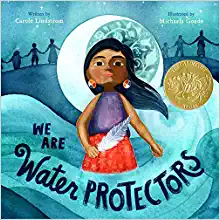 .
. 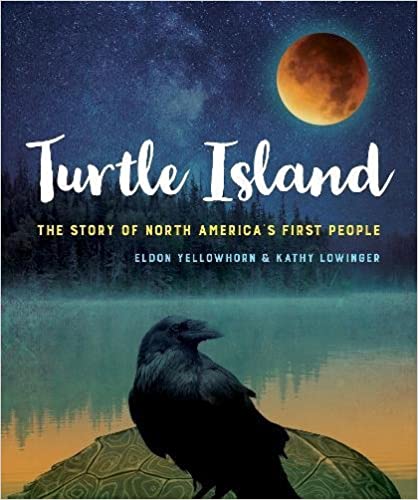
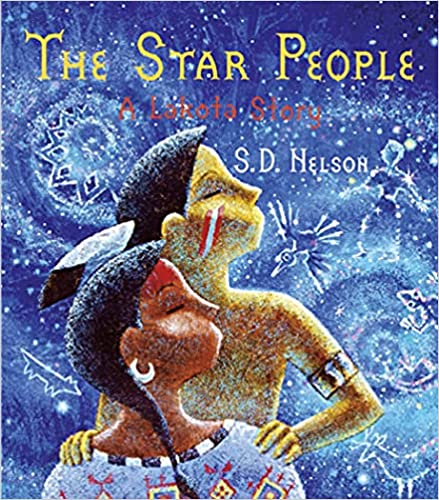 .
. 
|
|
Indigenous Peoples' Day & Columbus Day Smithsonian ArticlesHow Native Americans Bring Depth of Understanding to the Nation’s National Parks The World’s Largest Collection of Standing Totem Poles Keeps Getting Bigger How Sitting Bull’s Fight for Indigenous Land Rights Shaped the Creation of Yellowstone National Park Did This Map Guide Columbus? |

Following Along with Project Based Learning
Maybe you didn't have the time/space/capacity/energy/interest to join this year's Project Based Learning Family Class, but you're intrigued.
Well here is your opportunity to follow along on the side and see whether the methodology resonates with you and your family.

This year the PBL Family Group will be guided through 6 themed Projects. We will share all of the resources with you here in the blog in case you'd like to join in with one or more of the projects for fun.
Our first Themed Unit is called Home Sweet Home and is focused on projects that we can design and carry out in or near or related to our homes. Each family and each student within the family is invited to design and carry out a project that is near and dear to their hearts in some way.
Check out this idea generating book made via bookcreator.com. Maybe one of the ideas will inspire your family to design a project of your own! click here to read
We are starting to talk about Project Planning. What sort of project planning do we do as adults? Which strategies can help our students to plan projects? Here are a few tools. It's easy to make your own using canva.com or to just scribble them out on big paper at the kitchen table!
You can access these docs for printing HERE.


You can access these docs for printing HERE.





Pop for Sight words comes highly recommended by the Giles Brothers and their mom Sarah of the Pearl Program.
They love it for practicing sight words in a fun and engaging way before, during, or after their reading lessons.
From Amazon: About this item
- BUILD early literacy, increase vocabulary, and improve fluency
- Cards can be used on their own as flash cards for early reading activities
- Two to 4 kids compete to read and collect the most popcorn pieces.
- Set includes 100 die-cut popcorn cards (92 with sight words and 8 Pop cards for game play) and storage box, For 2-4 players - Ages 5+

Teaching Reading and Spelling to Children with Autism, by Marie Rippel
This article was taken directly from the All About Learning Press website: https://blog.allaboutlearningpress.com/teach-reading-autistic-child/
Are you teaching a child with autism how to read or spell? If so, this post is for you!
Children with autism often have difficulty learning to read and spell using standard methods because their brains process information in unique ways.
For example, some children with autism think in pictures instead of words. Many have problems recalling strings of words or multi-step instructions. And differentiating between certain sounds can be difficult for those with autism, which can make learning to read especially difficult.
Fortunately, All About Learning's step-by-step, multi-sensory techniques actively engage children in the learning process and make learning to read and spell much easier.
6 Tips for Teaching Kids with Autism
Following are six important tips for teaching children with autism how to read and spell.
-
Provide Concrete Examples
Children with autism often have difficulty processing abstract ideas. Color-coded letter tiles provide concrete examples of reading and spelling concepts.
Also, autism can make it impossible to process excessive verbal input. Demonstrating blending and segmenting using letter tiles allows the child to understand the process without being overwhelmed with long verbal explanations.
-
Use Direct Instruction
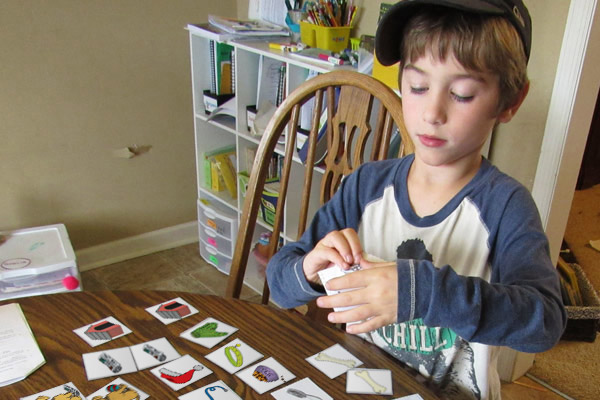
With direct instruction, lessons are carefully sequenced and explicit. The student is told exactly what he needs to know. Each reading and spelling lesson should include three simple steps:
- A review of what was learned the day before
- New teaching of a single concept
- A short practice of the new teaching
-
Focus on Incremental Lessons
Break every skill down into its most basic steps and then teach the lessons in a logical order, carrying your child from one concept or skill to the next. Each step should build on steps your child has already mastered, ensuring that there are no gaps.
-
Teach One New Concept at a Time
When teaching children their letters, start with the phonograms and teach them the ones that are easiest to learn and that they can put to immediate use, like M, S, P, and A. Teaching one concept at a time respects the child’s funnel and helps learning stick. It also helps keep lessons short.
-
Use Multisensory Techniques
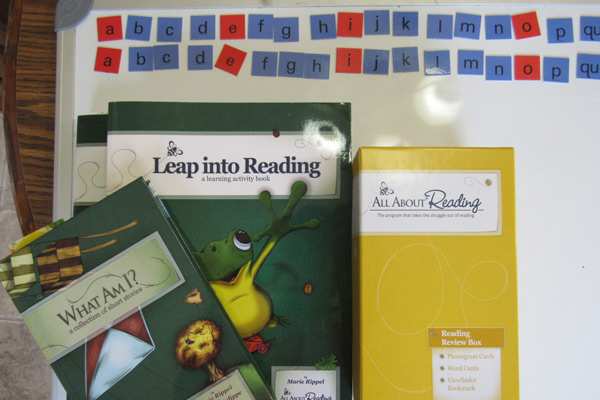
Teach every lesson using sight, sound, and touch. For example, using moveable letters engages both the kinesthetic and visual pathways to the brain, and saying the sounds aloud engages the auditory pathway.
You can also have your child form letters in salt or rice, or trace the shape of the letters on the textured surface of his choice, such as velvet or sandpaper. This is especially helpful if your child has difficulty with fine motor control and needs simple and repeated activities to help develop this skill.
-
Pay Attention to Reading Comprehension
Many children with autism learn how to decode words quickly and easily, but they have difficulty with comprehension. If your child is a literal thinker, it may be difficult for her to understand concepts like words with multiple meanings or making predictions or understanding character motivation.
To help, work on developing listening comprehension using the tips in 4 Great Ways to Build Listening Comprehension. This post on How to Teach Reading Comprehension also has great information on how to help your child understand what she is reading.
-
Place Your Student According to Ability, Not Grade Level
Set your child up for success with a mastery-based approach to learning. This approach lets you to meet your child right where he is and allows you to teach at your child’s pace instead of at a rigid pace set by a curriculum. Some children with autism learn in huge leaps—learning many literacy concepts almost all at once—while others need time to fully digest a lesson before progressing. By using a mastery-based approach, your child can move as quickly or as slowly as he need to.
-
Reward Your Child’s Progress
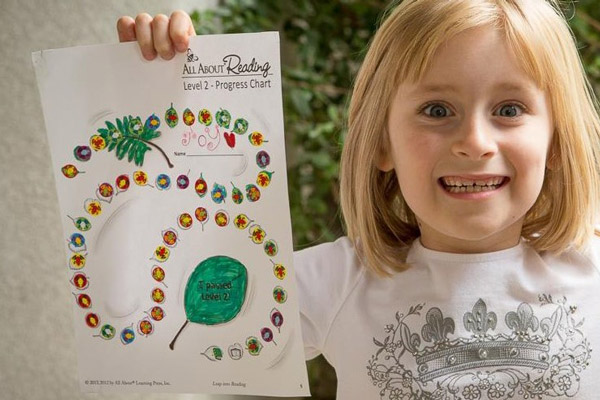
It is important to make the lessons mastery-based and to include a visual way for your child to mark her progress, such as a chart where she can paste stars for each lesson learned.
And don’t forget to use words of encouragement every step of the way. Simple encouragement like “Good job!” or “You did great!” or “Excellent!” goes a long way toward building confidence and self-esteem in children, motivating them to keep learning.

Linked here is the slide show with live links from the April 1st Number Talk. If you are at all interested in Project Based Learning for your family, please take a look at the process that I went through to explore a general question about my local surroundings. See the way that I applied mathematical concepts to my data for the purpose of a meaningful display. And then see the way that this first step led me to a specific driving question that will lead my future research. Can you imagine how student driven inquiry can lead deep and meaningful learning in all subject areas?

For this project I chose to use Canva.com for my displays. It was loads of fun as I'm just brand new to this platform (which is free for educators and students - wow!). With younger students I might not go this route, but it is a fantastic program for older students who are beginning to make public displays of their learning. I was delighted by the ways that I was able to use artistic elements and creativity to this exploration of biology and mathematics. If you have questions, please reach out to me at ajorgensen@qsd48.org. I'd love to chat!
.png) https://docs.google.com/presentation/d/1zUFYzOM6jXIP3am0uCVsqVuShNcFfESaidmi0O39V58/edit?usp=sharing
https://docs.google.com/presentation/d/1zUFYzOM6jXIP3am0uCVsqVuShNcFfESaidmi0O39V58/edit?usp=sharing

The Science of Reading - What it is? All excerpted from https://journal.imse.com/what-is-the-science-of-reading/
The Science of Reading: What we know...
-
The SoR helps us to understand the cognitive processes that are essential for reading proficiency. It describes the development of reading skills for both typical and atypical readers.
-
The SoR has debunked various methods used over the years to teach reading that were not based on scientific evidence.
-
Most reading difficulties can be prevented in young, at-risk students. In other grades, studies have demonstrated the effectiveness of intensive phonemic awareness training, intensive phonic decoding training, and opportunities for repeated practice with reading controlled text. Intervention in these skills leads to efficient orthographic mapping and the highest degree of success.
-
Teaching whole word memorization is limited, and learning phonics empowers students with an exponential effect.
-
If a child memorizes ten words, then the child can read ten words. But, if the child can learn the sounds of ten letters, the child can read…
-
350 three-sound words
-
4,320 four-sound words
-
21,650 five-sound words
-
-
-
Reading development can be divided into three stages:
-
Letters and sounds: Letter-sound knowledge is essential for both phonic decoding and sight-word learning.
-
Phonic decoding: Early phonological awareness skills enable the development of letter-sound knowledge and should be targeted for direct instruction through first grade. Advanced phonological awareness skills should continue to be assessed and practiced through third grade to ensure that a solid orthographic lexicon is established.
-
Orthographic mapping: Understanding orthographic mapping allows for teachers to support students who struggle to read. Orthographic mapping is the process that occurs when unfamiliar words become automatic sight words. The research on orthographic mapping explains how students develop this vast sight word bank for accurate and automatic word retrieval and also why students with reading problems struggle to develop this skill.
-
-
Phonics and phonemic manipulation must be proficient to allow for students to build a sight word bank or orthographic lexicon. To support this, students need sufficient practice and review in decoding and encoding, knowledge and application of concept skills, and exposure to decodable text.
-
Comprehension is the ultimate goal for reading. It is driven by two broad skill sets that are identified in the Simple View of Reading (SVoR).
-
The Simple View of Reading (SVoR) is further detailed in Scarborough’s Reading Rope, which highlights the essential components of reading.
-
Phonics is an important component in early, effective literacy-based instruction.
-
Learning to spell is far more complex than just memorizing words. Encoding (spelling) is a developmental process that impacts fluency, writing, pronunciation, and vocabulary.
-
Most teachers have received little knowledge about language structures that are used in reading, speaking, and writing. The SoR has compounded information but has yet to make it into the professional development of all teachers.
-
Students with reading difficulties present on a continuum of severity and require highly skilled teachers who have the knowledge and expertise to provide intervention based on the SoR.
-
The findings of the SoR translate into practices called Structured Literacy™. Structured Literacy is an approach to teach reading that is based on the Science of Reading.
Structured Literacy: How we teach
-
Through Structured Literacy (SL), teachers implement methods that are appropriate for all students and particularly necessary for students with learning differences.
-
Orton-Gillingham is an evidence-based SL approach that uses research from the SoR and incorporates recommended multi-sensory instructional techniques. SL supports instruction that is explicit, sequential, systematic, prescriptive, diagnostic, and cumulative.
-
Instruction is assessment-driven. The diagnostic aspect of SL requires continued progress monitoring to measure outcomes and guide differentiation.
-
Students are provided repeated opportunities with decodable text that have ample representations of the phonetic elements for code-emphasis.
-
Through regular dictation of words and sentences containing the phonetic concept, students become skilled in spelling words within and outside of the text.
Structured Literacy: What we teach
-
The SoR identifies five essential components that make up the Simple View of Reading. Structured Literacy incorporates all five:
-
Phonemic Awareness
-
Phonics
-
Fluency
-
Vocabulary
-
Comprehension
-
-
Students who have difficulty decoding need a focus on phoneme-grapheme and blending automaticity for both real and nonsense words. Teachers are skilled at differentiating instruction based on assessment results.
-
Orthography helps students to understand why words are spelled the way they are spelled. Students learn to identify the overlapping features of words including word origin, phoneme-grapheme correspondence, position constraints, and patterns and conventions. This helps them to acquire the alphabetic principle.
-
Phonemic awareness is emphasized as a necessary pre-reading skill and teachers recognize and target the sequence of skills to build phonological awareness from early to advanced skill levels.
-
Regular words are taught according to phonetic patterns and irregular words are analyzed for their irregularities. When proficient readers encounter new words, they phonemically analyze the word for the regular grapheme-phoneme patterns and are able to identify the irregular element(s) with ease. Teaching weak readers to activate this process allows them to align the letters to the phonemes in their memory.
-
Morphology is the study of meaningful units within words. Students are able to expand their vocabulary when they are directly exposed to the study of root words, prefixes, and suffixes.
The Science of Reading has proven that a Structured Literacy approach is a necessary foundation for reading success. As teachers, we make a commitment to continue our education to support the learning of every student. IMSE’s Orton-Gillingham training and programs make it possible for teachers to integrate evidence-based and research-based reading instruction and intervention strategies into Multi-Tiered Systems of Support (MTSS) to empower all students in every classroom.
Sign up for our LIVE virtual Orton-Gillingham training! We are now offering half-day, evening, and weekend options to best fit your schedule.
To learn more about the Science of Reading and Structured Literacy, check out the following great reads:
-
Essentials of Assessing, Preventing, and Overcoming Reading Difficulties by David Kilpatrick
-
Reading in the Brain: The New Science of How We Read by Stanislas Dehaene
-
Unlocking Literacy: Effective Decoding and Spelling Instruction by Marcia Henry
-
Reader, Come Home: The Reading Brain in a Digital World by Maryanne Wolf

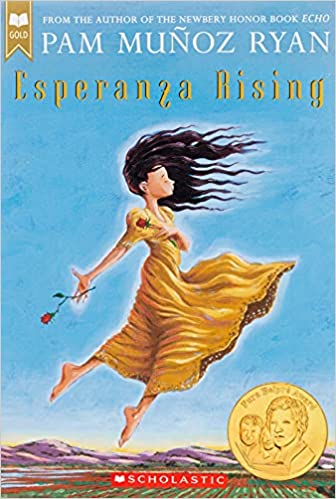
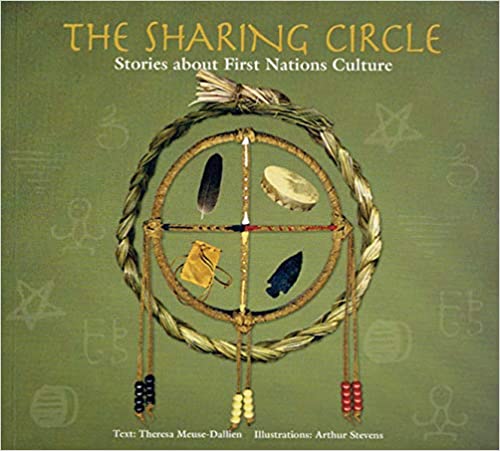

/https://tf-cmsv2-smithsonianmag-media.s3.amazonaws.com/filer_public/e1/25/e125e727-1260-41fa-a418-093807b870e0/5_suggestions_youth_in_action.png)
